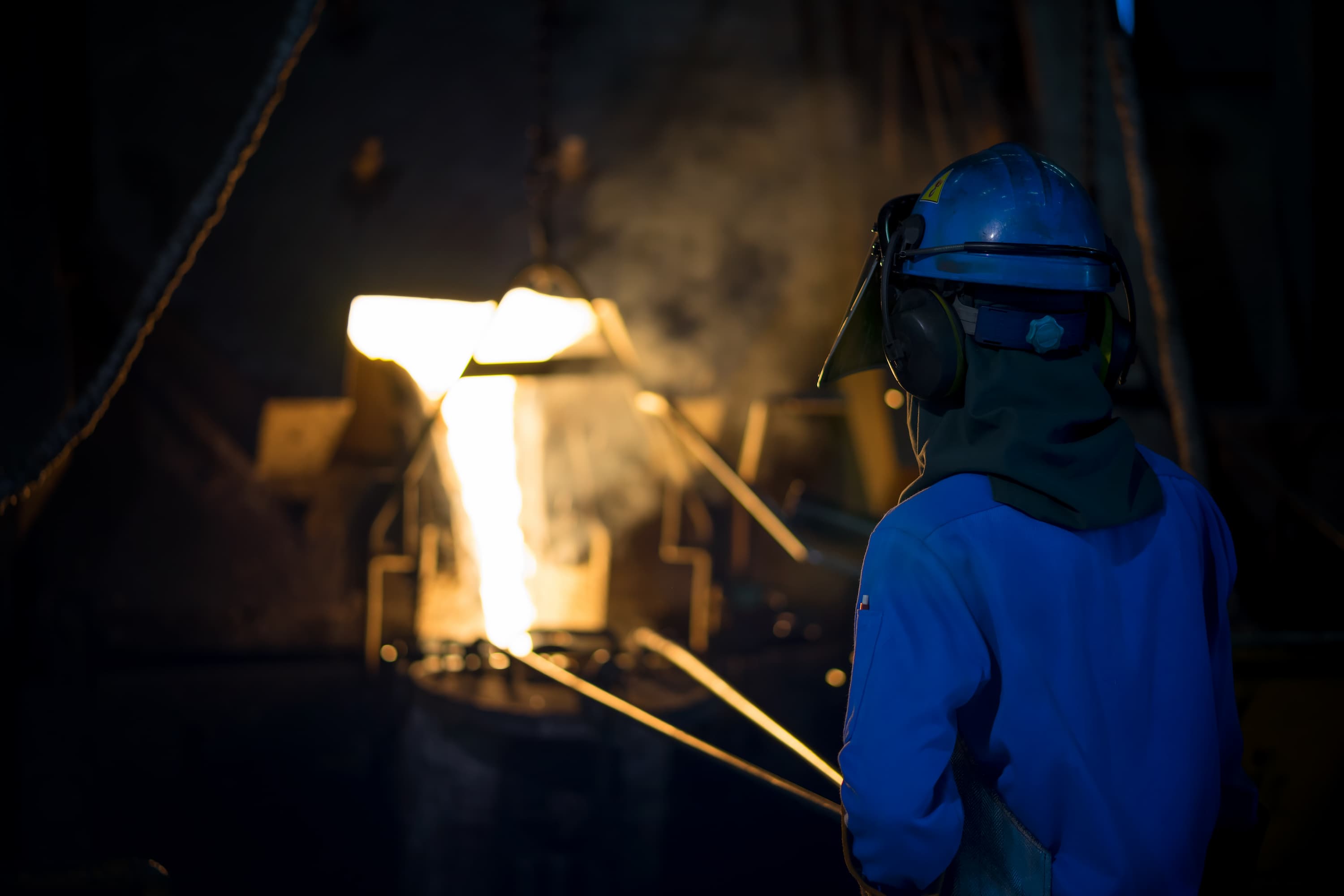When you’re in the metal casting space, mistakes can be costly. Things like errors, misruns, gas porosity, and shrinkage defects can all negatively impact production. They can deplete materials, increase time to market, and harm your plant’s overall profitability.
Porosity is among the most common casting defects. It occurs when a pocket forms due to air or gas trapped in the metal during solidification (this is “gas porosity”). Porosity is also caused by the metal shrinking, leaving voids in the center of the metal (this is “shrink porosity”).
Let’s explore these two types of metal casting defects in detail.
What Is Gas Porosity?
Types of Gas Porosity Defects
- Blisters – Surface defects of thinly covered gas pockets that resemble blisters.
- Blowholes – Larger subsurface gas pockets inside the casting. They are invisible to the naked eye and are usually detected by x-ray equipment or cross-sections analyzed with a microscope.
- Open Holes – A surface variant of the blowhole defect. These are surface-level holes.
- Pin Holes – Also called “porosities,” these tiny holes are typically grouped in the upper region of the casting just below the surface.
- Sand Blow – This defect is a large, subsurface void.
- Scars – A variant of an open hole defect that is shallow and often non-concentric.
Causes of Gas Porosity Defects
There are several possible causes of gas porosity in metal casting processes.
These include:
- Air trapped in the metal
- Low metal temperatures
- Material wall shrinkage
- Metal purity/alloy used
- Mold design – feed system
- Mold design – sharp corners
- Excessive mold lube
- Pressure settings.
- Shot speed settings
What Are Shrinkage Defects?
Shrinkage is a cavity or depression in castings that occurs as the material cools to become solid. Shrinkage porosity has angular edges rather than round edges associated with gas porosity. Shrinkage should be factored into all casting processes.
Types of Shrinkage Defects
There are two fundamental shrinkage defects:
- Open Shrinkage – A depression that is open to the atmosphere.
- Pipes – open shrinkage defects that form at the surface and burrow into the casting
- Caved Surfaces – shallow, open shrinkage defects that form across the surface of the casting.
- Closed Shrinkage – These defects form within the casting and are called “shrinkage porosity.” These defects usually occur at the top of hot spots.
- Sponge Shrinkage – A thin lattice texture typically in the casting product's mid-section (thick area).
- Filamentary Shrinkage – A system of cracks, often difficult to detect under a thick material section.
- Dendritic Shrinkage – Narrow, random fractures or cavities, often unconnected.
Causes of Shrinkage Defects
- Hot spots & poor mold heat dissipation.
- Feeder system design (runner, sprue risers, gating)
Solutions for Gas Porosity and Shrinkage
Vacuum Impregnation
Vacuum impregnation involves introducing a material to seal pores in the casting using vacuum or pressure methods. It is effective in controlling porosity.
High-Quality Material
Avoid materials that generate water vapor or gas during the casting process. Use high-quality coatings and refining agents to avoid gas.
Improve Mold Design
- Design a running (gate) system with risers for continuous metal flow.
- Insert internal cooling (chills, cooling ribs & coils).
- Adjust cooling time and reduce temperature.
- Isolate gas in less critical areas, allowing more vents for more discharge.
- Change the gate thickness or direction
- The overflow chute should be less than 60% of the inner gate’s total cross-sectional area.
- Reduce sharp corners and pockets.
- Proper pressure and shot speed settings.
Casting Simulation Software
Simulation software allows the designer to streamline the design process, eliminate potential defects, and optimize the molding process in the office rather than on the production floor as scrap accumulates. This software assists in the design of the desired form, fit, function, and manufacturability.
Simulations allow the designer to fine-tune the rigging design, dimensions, tolerances, and exact material specifications without the typical sample trials, scrap, and tool refinements.
Concerns regarding surface finish, dimensional tolerance, gas porosity, texture, etc., are easily addressed in the simulation. The designer can quickly refine all parameters of the casting geometry and rigging design.
This will allow the designer to eliminate most, if not all, production troubleshooting, minimize scrap and defects, and improve pre-production design time. These modeling programs substantially reduce time to market with rapid development and built-in troubleshooting.
The simulation process takes weeks or even months off of the development cycle. With the time to market significantly reduced, improving competitiveness and customer response is greatly accelerated.
Resolve Gas Porosity & Shrinkage Defects
The best choice to resolve porosity, shrinkage, and all potential casting problems is 3-D simulation software. Transvalor Americas, the industry benchmark metal casting software, is the choice of foundry professionals worldwide.
The team at Transvalor Americas offers a broad portfolio of casting simulation software for metallic solids, liquid metals, and polymers, including an intuitive user interface and built-in problem solver. All of our software is supported by world-class technical support.
Contact Transvalor Americas to learn more.


